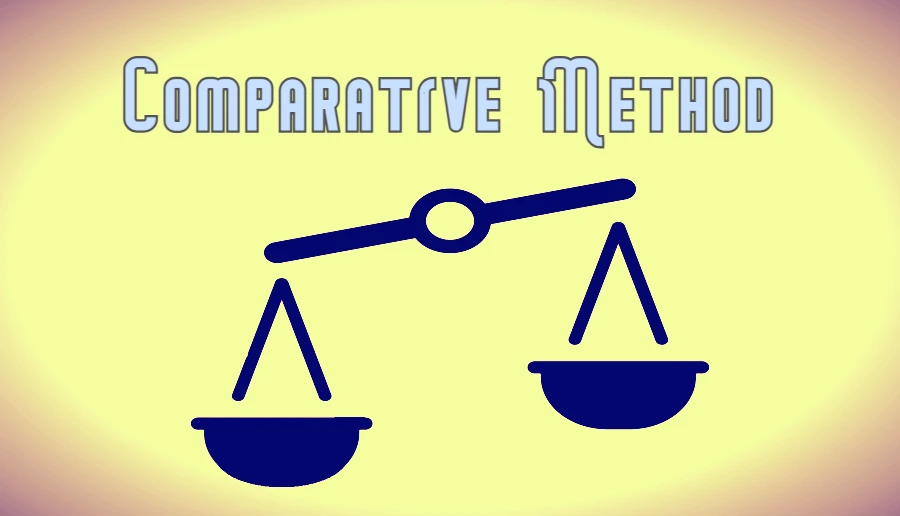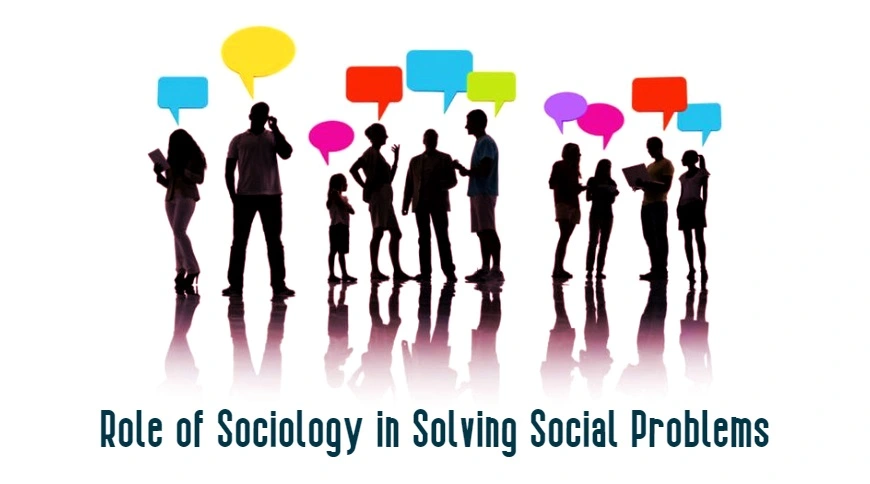Overview: Technology transforms the workplace in profound ways, but it does not determine outcomes on its own. Its impact depends on social choices – for instance, whether we embrace flexible work while protecting worker rights, whether we use surveillance to support safety or to punish. Reflecting sociologically, we see that technology can liberate workers or enchain them, often both. Navigating this requires balancing the efficiency and opportunity of technology with the social values of dignity, autonomy, and community. In the coming years, debates about data privacy, a universal basic income, and the future of labor rights will shape how technology ultimately reshapes work. But one thing is clear: technology will continue to be a central force in the social structure of work, and sociological analysis will remain vital to understanding its human consequences.

The Role of Technology in Transforming the Workplace: Sociological Analysis
Technology has long reshaped how and where we work. From the steam engines and factories of the Industrial Revolution to today’s AI-driven and remote-work environments, each wave of innovation has changed the social organization of labor.
Pioneering sociologists offer frameworks for understanding these shifts. Karl Marx warned that unchecked mechanization can lead to worker alienation – a sense of powerlessness or disconnection when people lose control over their labor and its products.
Max Weber explored how technology-driven rationalization and bureaucracy create an “iron cage” of efficiency, trapping workers in routine and deskilling.
Postmodern thinkers like Jean Baudrillard note how virtual simulations (hyperreality) can blur work and leisure, while Michel Foucault’s analysis of the panopticon highlights the psychological effects of surveillance in modern organizations.
Today’s workplace echoes these classic insights. In 19th-century factories, machines and division of labor massively boosted productivity but also disconnected workers from the fruits of their labor.
As Marx observed, workers were “object[s] of information, never subject[s] of communication,” compelled to regulate themselves as if always watched.
Technology divided tasks but also centralized ownership: capitalists owning the means of production (steam engines, looms, etc.) extracted surplus value from labor.
In sociology today, we see similar patterns. For example, algorithms manage millions of gig workers and delivery drivers, dictating routes or schedules to maximize efficiency – a new form of “digital Taylorism.”
Workers often follow instructions from an app or algorithm, not a human manager. This can intensify the sense that one’s labor is not one’s own, echoing Marx’s notion that “all products of their own labor [become] alien, external objects”.
Technological Rationalization and Bureaucracy
Weber argued that modern organizations pursue ever-greater rationalization: tasks are systematized, standardized, and governed by rules. With information technology, even small businesses adopt software and metrics to track performance. This creates clear efficiencies (fewer errors, faster workflows) but also increases impersonality.
A classic example is a large call center that uses monitoring software to track every phone call. The worker is managed by rigid scripts and data dashboards, reducing creative discretion.
As Weber might predict, employees can feel like cogs in a machine, a modern industrial equivalent to the assembly line.
Later scholars like George Ritzer termed this “McDonaldization” – the spread of fast-food–style efficiency principles to all sectors. In this view, technology-driven workplaces become predictable and calculable, yet risk dehumanizing workers.
Digital Surveillance and Control
Foucault’s concept of the panopticon famously illustrates how being constantly visible can discipline people. Today’s offices and even homes are increasingly “watched” by technology.
In warehouses and stores, cameras and movement sensors record employees’ every move; on computers, keystroke monitors and screen recordings log every click.
A recent U.S. Government Accountability Office report analyzed worker comments about automated surveillance tools and found many felt distrust and stress from feeling always watched.
For example, stakeholders reported that digital tracking “may create a sense of distrust among workers, making them feel like they are constantly being watched, and leading to a decline in worker productivity and morale”.
Some workers worry that data on their performance could be used unfairly or to deter organizing. This resonates with Foucault’s insight that the panopticon compels self-regulation: employees may censor themselves if they believe bosses are monitoring them.
In extreme cases, digital oversight even extends to health metrics (like fatigue or stress monitors) and geolocation on personal smartphones, blurring work into private life.
On the other hand, employers sometimes defend these tools as enhancing security or safety. A few stakeholders note benefits (e.g. tracking heat stress to prevent illness). But the GAO summary highlights that many others report negative impacts on well-being: elevated stress, anxiety, and fear.
These findings mirror Foucault’s warning that surveillance can produce a sense of ongoing vulnerability. In sociology, this dual edge – security vs. anxiety – is a central tension of modern workplaces.
Workers gain some protection (e.g. from harassment, or evidence of safe practices) but can also feel dehumanized when measured by machines rather than recognized as people.
Remote and Flexible Work
In contrast to on-site surveillance, technology has also enabled new freedoms. The COVID-19 pandemic accelerated remote work, and many trends look lasting.
Before 2020 most people worked entirely in offices, but by 2023 hybrid and remote models dominated.
According to a comprehensive Gallup survey, only 20% of “remote-capable” U.S. employees still work fully on-site, down from 60% in 2019. Meanwhile 29% now work fully remotely (up from 8%), and about half combine office and home (hybrid).
Put another way, roughly 50% of these workers are hybrid, 30% are fully remote, and 20% remain on-site. This seismic shift shows how digital tools (video conferencing, cloud files, collaboration software) have transformed workplaces.
People can log in from home, co-working spaces, or client sites, often with a simple laptop and broadband.
Remote flexibility brings positive sociological effects. Employees who work where and how they choose report higher satisfaction and engagement.
Gallup finds that people working from their desired location tend to be “more engaged at work, less burned out, [and] less likely to quit”. Hybrid workers (splitting time between home and office) enjoy significantly higher engagement and well-being than fully on-site employees.
Employers note similar gains: lower turnover and a wider talent pool. In fact, companies offering remote or hybrid options often see 2–3 times more job applicants than those forcing full in-person schedules.
The flexibility can empower workers – for example, parents or those with disabilities gain easier access to jobs that suit their needs. It also blurs rigid 9-to-5 norms; someone can attend a midday school play or late-night online class.
These possibilities align with a Weberian goal of rationalizing work to individual ends, rather than people simply fitting a factory timetable.
However, remote work poses its own challenges. Physical separation can fray team culture and collaboration. Some Gallup respondents reported that when people work apart, communication gaps and isolation can grow.
The more remote time, the more likely workers cite “frayed workplace collaboration” and weakened interpersonal bonds.
Leaders worry about tracking performance across distance, echoing old Taylorist concerns. Yet these concerns appear manageable: less than one-third of hybrid employees report major problems with communication or culture, compared to a majority who report benefits.
Sociologists note that digital communication is not identical to in-person contact: nuances can be lost in text or video. Organizations must consciously rebuild trust and team norms in a hybrid world.
Overall, data suggest that the benefits of remote flexibility (autonomy, engagement) often outweigh the downsides when managed well.
Gig Economy and Precarious Work
Another major shift is the rise of platform work and the so-called gig economy. Online platforms like Uber, TaskRabbit, and Upwork coordinate millions of independent workers via apps. On one hand, these platforms offer convenience and autonomy: someone can drive, code, or deliver meals on their own schedule, or combine odd jobs.
Economist studies find that some people appreciate the flexibility and freedom of gig work. On the other hand, gig work often lacks traditional protections.
A 2023 U.S. Bureau of Labor Statistics report found about 6.9 million workers (4.3% of the labor force) in “contingent” jobs, with another 11.9 million as independent contractors. These numbers understate even more people doing gig-like work (ridesharing, freelancing) on the side.
Many gig workers are effectively running small businesses without benefits: they pay for their own equipment, receive no unemployment insurance or health coverage, and can be quickly replaced by someone willing to work for slightly less.
From a Marxist standpoint, the gig economy can heighten alienation. Workers often have little control over prices or algorithms and can feel disposable.
A Boston University study on Uber drivers describes “algorithmic domination” where opaque app rules dictate pay and penalties.
Similarly, Weber would note that platform labor is hyper-rationalized: algorithms measure every trip’s speed, acceptance rate, and rating, turning drivers into statistic — and potentially fueling an “iron cage” of metrics.
Critics point out that the gig model can create a new precariat (Martin’s term), an insecure class that lives day-to-day. One sociological review notes that many gig workers face unpredictable hours, lack of career ladder, and isolation from coworkers.
Yet some sociologists also see empowerment in these trends. By using one’s own car or skills, workers can potentially earn more than in minimum-wage jobs, or set their own hours.
People in high-cost cities may supplement income through freelancing or subletting space. These possibilities illustrate how technology can decentralize work from bosses to individuals.
There’s even a self-directed dimension: rating systems allow good workers to gain reputation capital. But the balance is controversial: is the gig economy a path to independence or exploitation? Likely both – it offers freedom only at the price of security.
Automation and AI
Another frontier is the rise of robots and artificial intelligence. In factories, automated assembly lines and warehouse robots have been replacing human muscle for decades.
Now AI threatens mental labor too: algorithms can code, analyze data, and even write basic reports. Sociologically, this raises questions similar to Marx’s and Weber’s.
With machines taking over routine tasks, workers can be liberated from repetition – a potentially positive outcome. For instance, when doctors use AI to parse X-rays, they can focus on patient care. This is the ideal vision of technology as empowering knowledge work.
However, many jobs are at risk. Studies predict that a large share of current occupations could see some tasks automated by the early 2030s.
For example, routine accounting, legal review, and data entry are increasingly done by software. This fits Weber’s pattern: rational systems displace artisanal work. Marx would warn that unemployed or under-employed workers become alienated in a new way, unable to sell their labor power.
The sociologist Shoshana Zuboff calls some forms of AI-driven data collection “surveillance capitalism,” extending digital monitoring into decision-making. Workers may be evaluated by AI metrics or lose bargaining power if machines do their tasks.
One concrete example is manufacturing: the use of cobots (collaborative robots) on assembly lines.
In some factories, humans now work alongside robots that lift heavy parts. This can reduce injuries and boredom, but it also can deskill workers who no longer need to master the full craft.
Similarly, in offices, software like chatbots and automated emails handle many customer inquiries. This can free employees for higher-level strategy, or it can shrink the workforce and create a class divide between “tech specialists” and everyone else. The net effect remains to be seen, and depends on policies like retraining and social safety nets.

Positive vs. Negative Impacts
Technology’s transformation of work is a double-edged sword. On the positive side, digital tools can empower and connect workers.
People can work globally, collaborate in real-time across continents, and access learning resources to improve their skills.
Flexibility can improve work-life balance; some studies link remote work to higher job satisfaction. New fields (like app development, data science, green technology) create career opportunities that never existed before.
In essence, technology can expand human capacities, much as Weber hoped rationalization could free people from manual toil.
On the negative side, technology can erode the social fabric of work. The solidarity of co-workers, the spontaneity of office chat, and the mentoring by a factory foreman are harder to maintain over screens. Surveillance erodes trust.
Gig work erodes long-term relationships between employers and employees. The specter of AI raises fear of obsolescence. Karl Marx’s century-old critique of capitalist machinery still resonates: workers can be reduced to appendages of machines.
A sense of dehumanization or alienation may grow when labor becomes “all about the bottom line,” with little room for personal fulfillment or creative input.
In fact, a study in Human Relations found that excessive performance monitoring can leave employees feeling like mere “data points” rather than people. This risks disengagement and stress.
The balance of these effects often depends on social context. For example, some tech companies address alienation by emphasizing corporate culture (free snacks, team retreats, “makers’ time”) to rebuild a sense of community around work.
Others advocate for policies like a right to disconnect (so workers aren’t always on-call) and stronger labor protections for gig workers. These responses reflect the sociological insight that technology does not operate in a vacuum: its human impact is shaped by organizational and political choices.
Real-World Examples
Several concrete trends illustrate these dynamics. Many major companies have fully embraced hybrid models: for instance, Facebook (Meta) requires just three days in-office, Zoom two days, and many others follow similar schedules.
In the logistics industry, Amazon uses thousands of robots in its warehouses, increasing output but also subjecting workers to strict time targets monitored by sensors.
In cities, ride-hailing drivers manage their work entirely through smartphone apps, often working multiple platforms to piece together income.
In office environments, software like Slack and Teams allow asynchronous work, but also mean people are pinged at odd hours and juggling multiple chats. Each example carries both a promise (greater efficiency, new services) and a risk (burnout, inequality).
The gig economy’s statistics tell a story of growth and anxiety. The U.S. Bureau of Labor Statistics reports that contingent and alternative work arrangements grew notably by 2023.
Globally, analysts estimate hundreds of millions of people participate in some form of platform work today. These workers often report that technology enables their jobs – without an app, many wouldn’t have customers – yet they also often lack workplace protections like minimum wage or pensions.
The sociological term “precariat” (coined by Guy Standing) captures how a segment of the workforce now juggles insecure gigs.
Conversely, consider professional knowledge workers. A software engineer might spend mornings coding from home (avoiding commute and using high-tech tools) and afternoons collaborating in a coworking space via a Zoom call with colleagues abroad.
This kind of global, flexible work would have been unimaginable a few decades ago. It illustrates the positive side: creative collaboration is no longer tied to a single factory floor or office block.
Expertise and innovation can flow freely. European sociologist Manuel Castells even talks of an emerging “network society” where digital networks supplement or replace traditional hierarchies.
Conclusion and Future Trends
Looking ahead, technology’s role in work will likely deepen. AI and automation will continue advancing: routine cognitive tasks may become largely machine-handled, shifting human labor further into creative, strategic, or interpersonal realms.
The future of work is likely to be even more hybrid and digital. Virtual reality (VR) and augmented reality (AR) may create new kinds of remote collaboration spaces (think virtual offices or virtual training), blurring Baudrillard’s hyperreality and raising new questions about presence and identity.
Platform work may spread into new sectors (education, health) unless governments step in to regulate it.
From a sociological perspective, these trends suggest both continuity and change. The core issues Marx identified – who controls the means of production and who benefits from labor – remain central.
Weber’s concerns about rationalization and loss of freedom are still echoed in concerns over data-driven management. Foucault’s surveillance state now finds parallel in digital monitoring.
At the same time, new questions emerge about digital inequality, the right to disconnect, and how work defines identity in the 21st century.
Author: Mahtab Alam Quddusi – A postgraduate in Sociology



